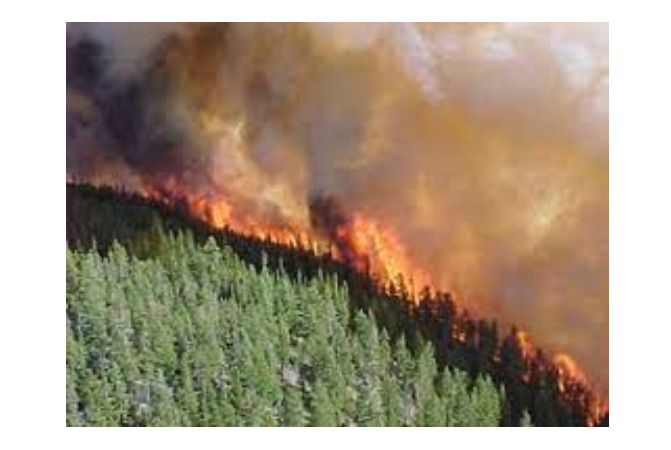Table of Contents
Introduction
Global warming is defined as the long-term heating of surface of the Earth due to the raise in the levels of heat- trapping greenhouse gases like carbon dioxide, methane, CFCs and nitrous oxide. This increase in the concentration of greenhouse gases in the atmosphere is driven by the anthropogenic action (human activities).

Climate scientists state that the human activities are to be held responsible for global warming rather than the natural causes. The average temperature of the surface of the Earth is about 1.1°C warmer than it was in the late 1800s. The population explosion is tightly linked with global warming. The industrial revolution that began in 1820 is largely responsible for the long-term shifts in temperatures and weather patterns.
The rise in concentration of certain gases called the greenhouse gases are responsible for the global warming. They are:
- Carbon dioxide (CO2)
- Methane
- Nitrous oxide
- Fluorinated gases (CFCs).
The major causes of global warming are
Deforestation
Trees absorb CO2 from the atmosphere and play a vital role in its balance in the atmosphere. When trees are cut down (deforestation), the carbon stored in them is released into the atmosphere, adding to the greenhouse effect.
Extensive usage of vehicles
Motor vehicle exhaust contain greenhouse gases like carbon dioxide (CO2), nitrous oxide and methane.
Emission of Chlorofluorocarbons (CFCs)
CFC is both an ozone depleting substance as well as a greenhouse gas. Certain CFCs will trap heat thousands of times more compared to the same amount of carbon dioxide. CFCs are used in a wide range of products like refrigerators, aerosols and home insulation foam.
Industries
Manufacturing, refining, food production, etc. are all a part of industrial activities. Emission of carbon dioxide, nitrous oxides is common when fossil fuels are utilised for heat, power or chemical processes.
Agriculture
N2O, a greenhouse gas is released due to various soil and crop management techniques employed in farming. Also, livestock and cattle release methane (CH4) as part of their digestive process, which is also a greenhouse gas.
Electricity
Significant quantities of greenhouse gas emissions occur due to usage of coal, oil, and natural gas for heating and cooling. Energy-related carbon-dioxide emissions from buildings has increased recently due to usage of electricity in lighting, appliances, and connected devices.
Natural causes of global warming include volcanoes, forest fires, melting permafrost, etc. The climate is affected when the ash and smoke emitted during volcanic eruptions goes out into the atmosphere.
Effects of Global Warming
Climate changes
Due to global warming, El Nino effect is intensified. El Nino Southern Oscillation (ENSO) is a weather pattern that is cyclic. The warming phase of ENSO is El Nino. It is increase in surface temperature of the central to eastern tropical Pacific Ocean for few months to two years. This disrupts temperature, rainfall and winds across the Globe.
Cooling phase of ENSO, La Nina also can impact global climate opposite to those of El Nino.
Both these phenomena affect marine life.
Hotter temperatures
Higher temperatures pose a threat for the survival of many organisms (specially organisms like amphibians). Heat-related illnesses spread fast. Forest fires spread rapidly and cause death of number of flora and fauna. When landscapes burn, more carbon dioxide is released into the air, creating a vicious cycle.
Loss of species
Climate change and global warming can lead to forest fires, extreme weather, and invasive pests and diseases. Some ecosystems like coral reefs are vulnerable to climatic changes. Thermal stress causes coral bleaching and loss of rich biodiversity in these regions.
Increased drought
Drought may not be direct effect of global warming, but it intensifies it in the areas with water scarcity.
Frequent storms
The amount of water that evaporates into the air increases due to warmer oceans. Intense precipitation (severe storm) is caused when such humid air moves over the land.
Raise in sea level
Melting of solar ice caps occurs due to warmer oceans. This results in sea level raise. It poses a threat to coastal regions. Ocean also absorbs lot more carbon dioxide from the atmosphere and o the waters become acidic. Marine life will be endangered.
Spread of Diseases
Changes in the patterns of heat and humidity are indispensable due to global warming. This provides favourable environment for many pathogens which in turn spread diseases.
Frequently Asked Questions on Global Warming
What is global warming?
Global warming is the long-term heating of Earth’s surface due to the raise in the levels of heat- trapping greenhouse gases like carbon dioxide, methane, and other pollutants. This increase in the concentration of greenhouse gases in the atmosphere is driven by the anthropogenic action (human activities).
What do CFCs stand for? What is the role of CFC in global warming?
CFCs stand for chlorofluorocarbons. CFC is an ozone depleting substance (ODS). Earth is exposed to UV rays due to ozone hole. UV rays increase the temperature which leads to global warming.
How does global warming affect climate change?
Global warming leads to many climatic changes. High temperature changes the weather patterns, causing heatwaves, droughts, torrential rain and flooding, wildfires and forest fires.
How can we control global warming?
The emission of greenhouse gases into the atmosphere should be cut down drastically to control the global warming. Development of zero-emission vehicles, switching to clean energy industries (like wind and solar), switching to plant based diet, conserving forests, grasslands, peatlands, and wetlands, etc.









